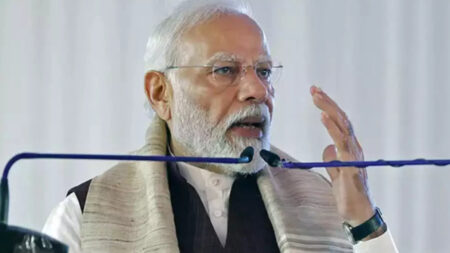The 2022 emissions gap report
This is an annual report which assesses the gap between the pledges taken by different countries to reduce greenhouse gas emissions and the required reduction as per estimates to maintain the average global temperature to rise less than 2⁰ Celsius, by the end of this century.

This flagship report is managed by the Copenhagen Climate Center of the UNEP. It serves as the scientifically authoritative source of providing timely and relevant information to the key policy makers, it guides the UNFCCC process and aids the implementation of the Paris agreement. The Paris agreement was adopted by 196 countries in 2015 at COP-21, which aimed at limiting global warming and maintaining average global temperature rise below 2⁰ Celsius ideally.
According to the 2022 report the ‘national pledges’ taken by countries will make only a substantial or ‘negligible difference’ when looking at the 2030 emissions. These nationally determined contributions (NDC) will reduce only 1 percent of the predicted emission towards the end of the decade.With the current course of action and policy followed the global temperature is expected to rise more towards the end of the century and hence a reduction of greenhouse gases to about 45 percent is required globally. It has emphasised on maintaining transformative solutions including changes and improvement in food systems.

The onus lies on food systems, agricultural and livestock emission
It comprises of all the products derived from food, livestock, fisheries etc this system is usually neglected in the climate action plans as people do not usually recognize emissions produced as a result of production and consumption patterns.Livestock emissions include carbon dioxide (from urea), nitrous oxide from livestock dung and urine and methane etc.
These gases contribute to the greenhouse effect as due to the presence of these gases heat gets trapped in the earth’s atmosphere leading to global warming. The global warming potential (GWP) of nitrous oxide and methane is 80% more than carbon dioxide which explains the reason that though these gases are present for a short duration in the atmosphere yet absorb more heat and hence are more harmful in the long run.
When a farm animal digests food due to their process , methane is released in the atmosphere. The cultivation of paddy, which floods the fields creates suitable condition for the bacteria emitting methane and it contributes 8 percent to the human linked methane emissions according to the data provided by UNEP.

The IPCC research has showed that methane is responsible for at least a quarter of the present day global warming. China is one of the largest emitters of methane and it has entered in a bilateral agreement with the US for reducing the methane emissions.It is interesting to note that US has promised to cut down its carbon emission by 2035 and China promised to phase down its emissions by 2025.So its high time that we pay attention on the upcoming climate meets and focus on climate adaptation, climate finance and transition to assist countries that are most affected by climate change.













